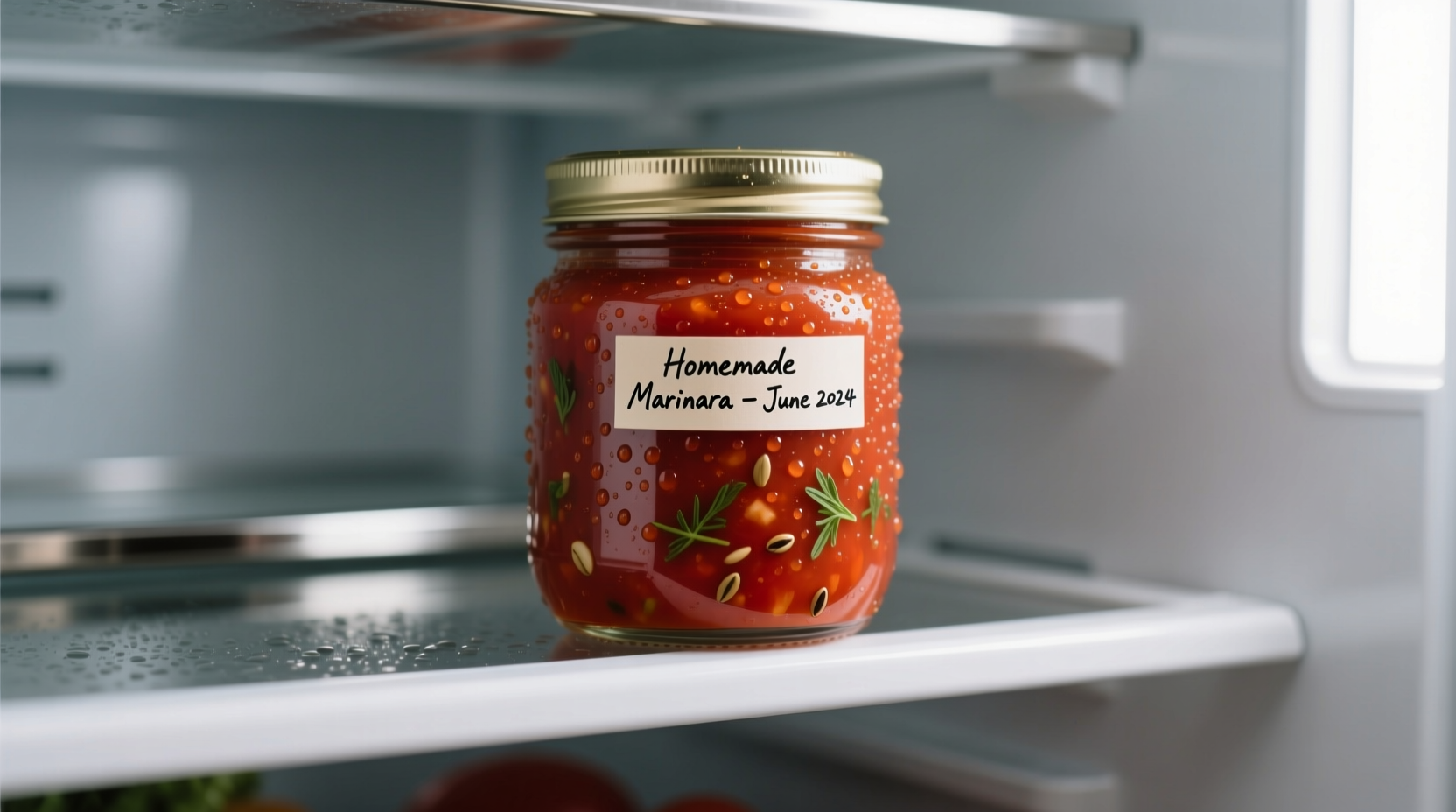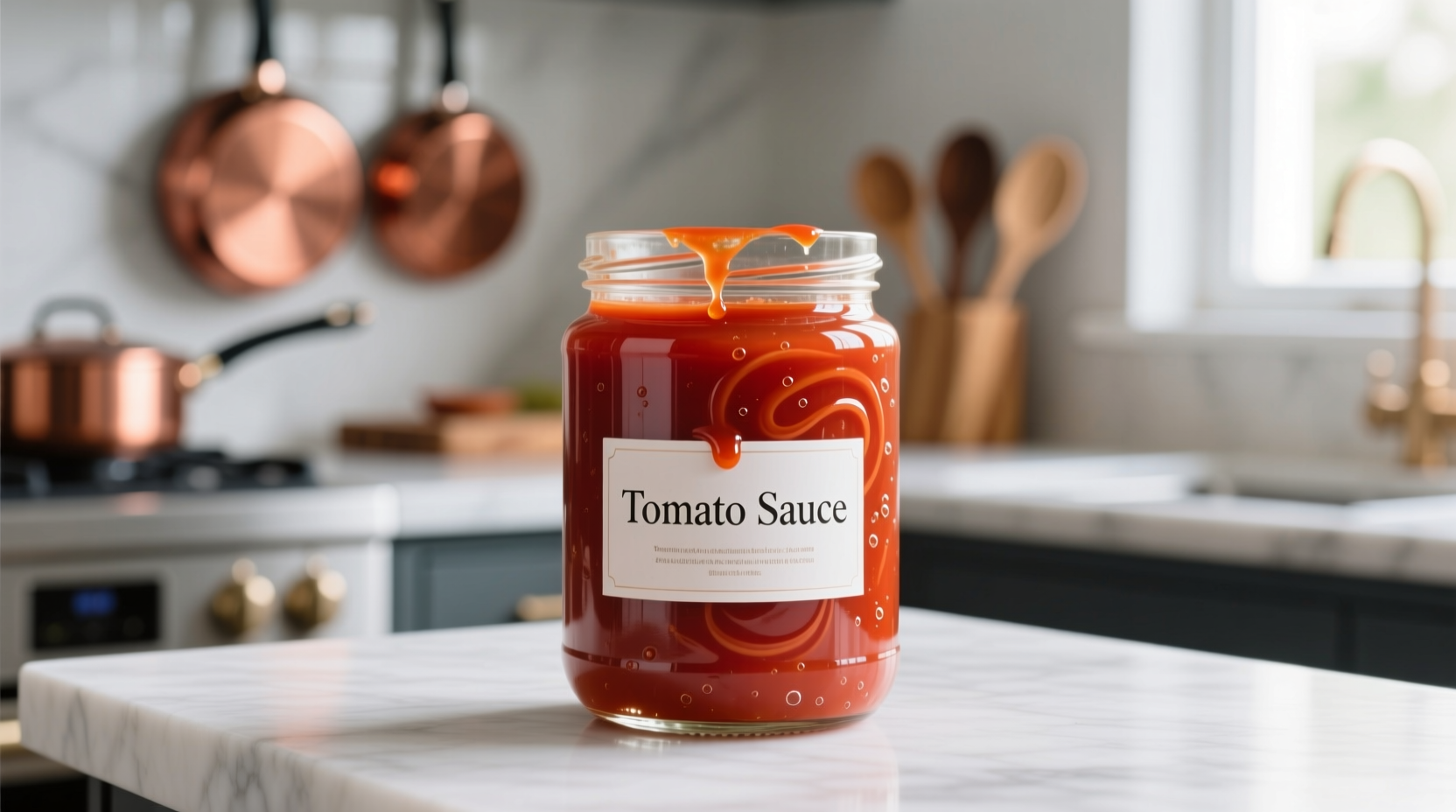Discover practical solutions for maximizing the utility of your tomato sauce jars while ensuring food safety and reducing waste. This guide provides science-backed methods for storage, preservation, and creative repurposing that professional chefs use daily in their kitchens.
Understanding Tomato Sauce Container Options
Not all tomato sauce jars perform equally for storage and reuse. The container material significantly impacts both food safety and practical applications. Glass containers maintain structural integrity through multiple uses, while plastic alternatives often degrade after just a few cycles.
| Container Type | Shelf Life (Refrigerated) | Freezer Suitability | Reuse Potential | Environmental Impact |
|---|---|---|---|---|
| Glass jars with metal lids | 5-7 days | Excellent (with headspace) | 10+ uses | Highly recyclable, reusable |
| Plastic containers with plastic lids | 3-4 days | Poor (may crack) | 2-3 uses | Limited recycling options |
| Metal cans | 2-3 days after opening | Not recommended | Single use | Recyclable but limited reuse |
This comparison reflects data from the U.S. Food and Drug Administration's food storage guidelines updated in 2024. Glass containers consistently outperform alternatives for both food safety and environmental sustainability.
Optimal Storage Techniques for Opened Tomato Sauce
When storing opened tomato sauce, proper technique matters more than container choice. Transfer sauce to a smaller container if more than half the original jar is empty to minimize air exposure. Always use clean utensils when handling to prevent bacterial contamination.
For refrigeration, place jars in the main compartment rather than the door where temperature fluctuations occur. The USDA Food Safety and Inspection Service recommends maintaining refrigerator temperatures at 40°F (4°C) or below for optimal food preservation.

Freezing Tomato Sauce: Professional Methods
Freezing represents the most effective long-term preservation method for tomato sauce. When using the original glass jar:
- Leave at least 1-inch of headspace to accommodate expansion
- Remove metal lid and replace with plastic freezer-safe lid
- Label with contents and date using freezer-safe marker
- Thaw overnight in refrigerator, not at room temperature
Glass containers with straight sides work best for freezing, as curved jars may crack under pressure. The National Center for Home Food Preservation confirms that properly frozen tomato sauce maintains quality for 6-8 months.
Creative Repurposing Ideas for Empty Jars
Before recycling your empty tomato sauce jars, consider these practical second-life applications that professional chefs utilize in commercial kitchens:
Kitchen Organization Solutions
- Store dry ingredients like pasta, rice, or beans with visible labels
- Create custom spice blends in uniform containers
- Hold liquid condiments like homemade vinaigrettes
Meal Prep Containers
The uniform shape of standard tomato sauce jars makes them ideal for portion-controlled meal prep. Fill with layered salads, overnight oats, or single-serving smoothie ingredients. Their stackable design maximizes refrigerator space efficiently.
Troubleshooting Common Jar Problems
Stuck lids and stubborn stains frequently challenge home cooks working with tomato sauce jars. Try these professional techniques:
Opening Difficult Lids
- Tap the lid's edge gently with a spoon to break the seal
- Run hot water over the lid for 30 seconds to expand the metal
- Place a rubber band around the lid for better grip
Removing Tomato Stains
Create a cleaning solution of one part baking soda to two parts water. Apply to stained areas and let sit for 15 minutes before scrubbing with a non-abrasive sponge. For persistent stains, add white vinegar to the mixture for enhanced cleaning power without damaging the glass.
Safety Considerations for Homemade Sauce Preservation
When preserving homemade tomato sauce in jars, specific safety protocols must be followed. The acidity level of tomato sauce makes it particularly vulnerable to bacterial growth if improperly stored.
According to the National Center for Home Food Preservation, always:
- Use jars specifically designed for canning with proper seals
- Maintain proper headspace (1/2 inch for pints, 1 inch for quarts)
- Process filled jars in a boiling water bath for recommended times
- Check seals before storage by pressing the center of the lid
Discard any jars showing signs of spoilage including bulging lids, bubbling liquid, or unpleasant odors. When in doubt, throw it out—never taste questionable preserved foods.
Environmental Impact and Sustainable Practices
The lifecycle of tomato sauce jars reveals significant environmental implications. Glass production requires substantial energy, but glass containers can be reused multiple times before recycling.
A 2023 study by the Environmental Protection Agency found that reusing glass containers 5 times before recycling reduces their carbon footprint by 47% compared to single-use disposal. Consider these sustainable practices:
- Wash and donate clean jars to local community gardens for seed storage
- Participate in jar exchange programs at farmers markets
- Use jars for DIY projects instead of purchasing new containers
When Not to Reuse Tomato Sauce Jars
Despite their versatility, certain conditions make tomato sauce jars unsafe for reuse. Discard jars showing:
- Cracks or chips, even if small
- Cloudiness or etching from repeated dishwasher use
- Rust on metal lids or rims
- Previous storage of highly acidic or oily foods beyond recommended limits
The FDA specifically warns against reusing jars originally containing commercially prepared foods for home canning, as their structural integrity may be compromised from the initial processing.











 浙公网安备
33010002000092号
浙公网安备
33010002000092号 浙B2-20120091-4
浙B2-20120091-4